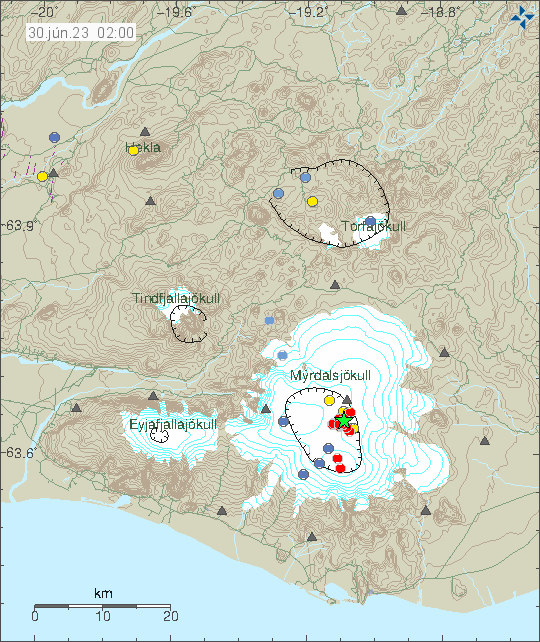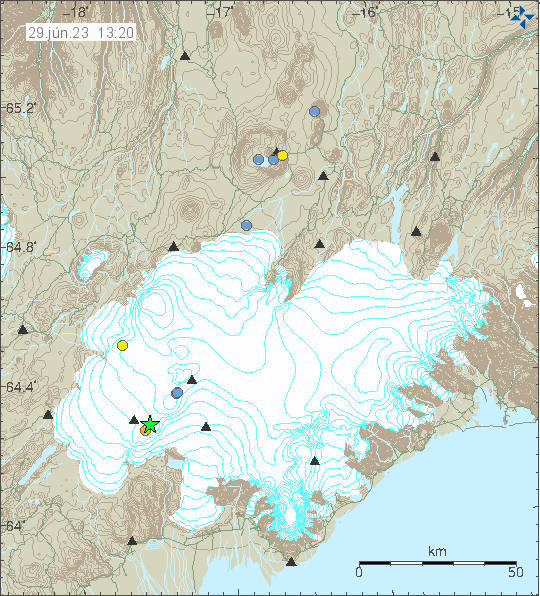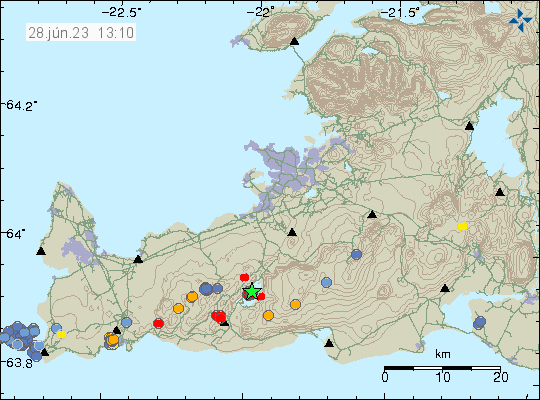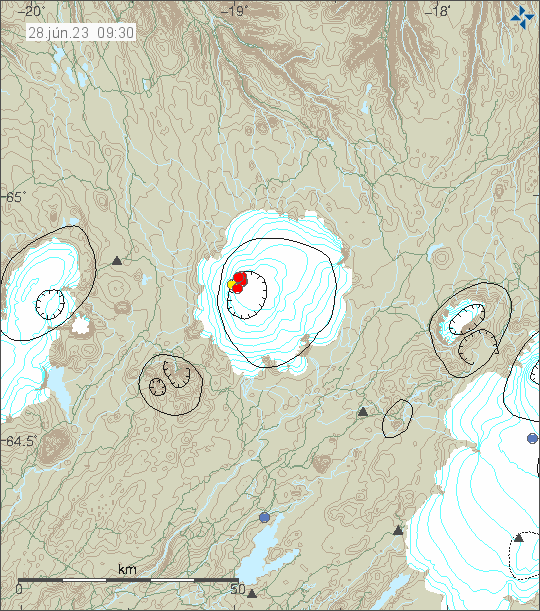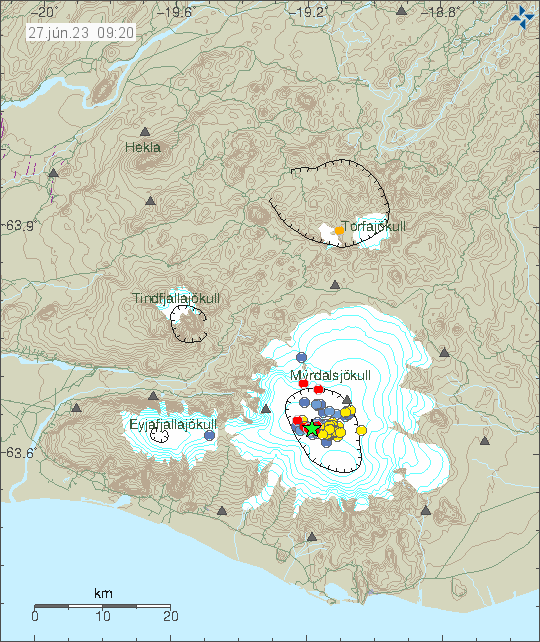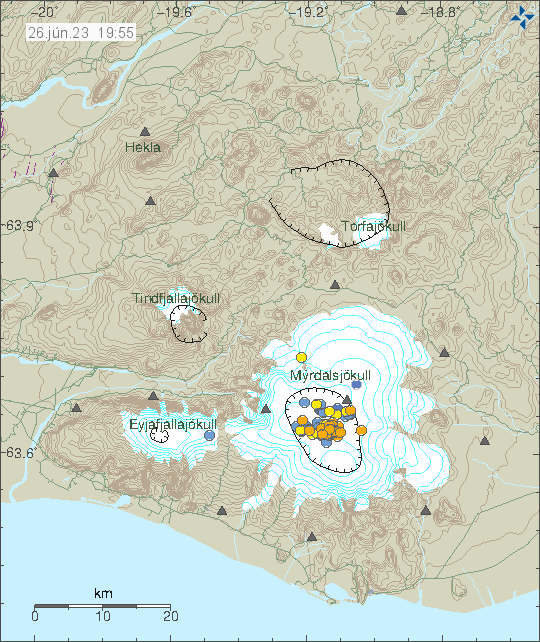This is an update on Katla volcano activity. The largest earthquakes in the earthquake swarm during the night had a magnitude of Mw4,4. There where total of eight earthquake with magnitude above Mw3,0 in this earthquake swarm and in total of 58 earthquakes in total according to Icelandic Met Office website. This earthquake activity is ongoing even if currently there are no earthquakes taking place (at the writing of this article).
This earthquake activity was clearly felt in Þórsmörk area and was resulting in people loosing sleep.

According to news reports on mbl.is there has now been increase in conductivity in Múlakvísl glacier river. This seems to be directly connected to the earthquake swarm activity that took place during the night. There is also more water in the Múlakvísl glacier river, if that is connected is unclear, because of rain in Iceland in recent days, there is general more water in rivers. Harmonic tremor has not started to change. That can happen without warning at any time.
Icelandic News
Rafleiðni fer stígandi í Múlakvísl eftir skjálfta (mbl.is)
Önnur skjálftahrina í Mýrdalsjökli (ruv.is)

